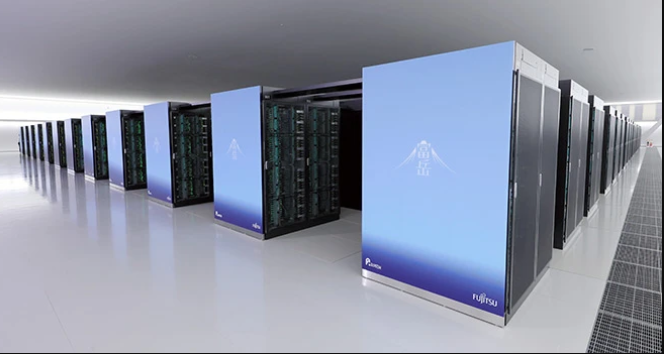Japan is taking another big step in the world of supercomputers. The RIKEN research institute has announced plans for FugakuNEXT, a system that will follow the famous Fugaku supercomputer. Unlike before, this time Japan will not build everything alone. NVIDIA, the U.S. tech giant known for its powerful GPUs, will work alongside RIKEN and Fujitsu to bring this ambitious project to life.
Moving from supercomputers to AI-powered science
FugakuNEXT is not just an upgrade in speed. The project has a larger goal: to create a platform where supercomputing and artificial intelligence work together. In the past, supercomputers mainly focused on simulations such as predicting weather, studying earthquakes, or testing new drugs. Now, with AI built into the system, researchers will be able to use machine learning alongside simulations.

This will help in solving more complex problems. For example, scientists could use AI to process massive data sets quickly, while the traditional CPU and GPU power of the system runs detailed models. Together, these features could lead to breakthroughs in medicine, disaster management, energy, climate research, and even space exploration.
NVIDIA brings GPU strength while Fujitsu designs the backbone
The partnership divides the work based on expertise. NVIDIA will supply its powerful GPUs, which have become the backbone of modern AI. These chips will allow FugakuNEXT to handle advanced machine learning tasks and deep neural networks.

On the other hand, Fujitsu will design the CPU system and the architecture needed to tie everything together. Fujitsu’s MONAKA-X processors will play a central role, and they will connect to NVIDIA GPUs using a high-speed link called NVLink Fusion. This ensures that data flows smoothly between CPUs and GPUs without slowing down.
The combination of Fujitsu’s system design and NVIDIA’s GPU power creates a balanced machine that is not only strong in number-crunching but also capable of modern AI-based research.
Planning for zettascale performance by 2030
FugakuNEXT is expected to begin operating around 2030, once again at the RIKEN campus in Kobe, where Fugaku is currently housed. The goal is ambitious: the new system should reach up to 100 times the performance of Fugaku.
In technical terms, that means moving toward the zettascale era—a level of computing power that can handle more than a sextillion operations per second. For comparison, Fugaku is already one of the fastest supercomputers in the world, but FugakuNEXT aims to go far beyond that level.
Achieving zettascale would make Japan one of the leaders in global high-performance computing. It would also provide the country with a tool to stay ahead in scientific research, industrial applications, and national security challenges


 Nvidia Takes 4% Stake in Intel with Strategic $5 Billion Deal
Nvidia Takes 4% Stake in Intel with Strategic $5 Billion Deal  Resource-scarce Japan gets more trains running on renewables
Resource-scarce Japan gets more trains running on renewables  Japan begins discussions on draft basic AI plan sharp lag in use
Japan begins discussions on draft basic AI plan sharp lag in use  South Korea, Japan defense ministers explore tech cooperation
South Korea, Japan defense ministers explore tech cooperation  Japan and S. Korea Expand Working Holiday Program at Summit
Japan and S. Korea Expand Working Holiday Program at Summit  Senegal President Calls for Japan’s Support in Africa’s Tech
Senegal President Calls for Japan’s Support in Africa’s Tech